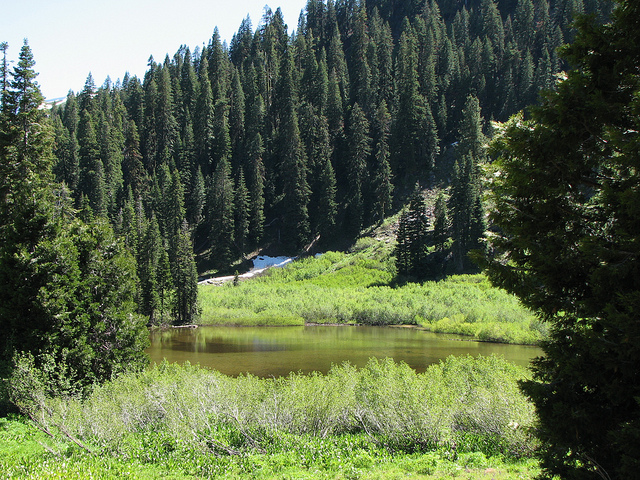Alaska Hiking
Plants, the human food supply, and even healthy air all greatly depend on the actions taken by the adults of today. While there is a lot of talk among adults about what should and should not be done to keep the environment healthy, it is important to include children in the conversation, as well. Teaching kids about horticulture is crucial for the continued success of gardening and plants in general. Inspiring in young kids a love of plants increases the likelihood they will pursue that interest as an adult. Kids who become interested in plants may grow up to become horticulturists who will work towards keeping the plants of tomorrow healthy.
When teaching kids about horticulture, it's important to start with the word itself. Many children, and even some adults, might be unfamiliar with this word. By definition, horticulture is the science or art of cultivating gardens and growing fruits, vegetables, turf, flowers, and ornamental plants. This typically involves small crops grown in one's garden, in an orchard, greenhouse, or a nursery. One of the easiest ways for teachers and parents to introduce children to horticulture is through gardening at home or at school. Gardening allows kids to be active participants while they learn. Not only does this make it more fun for the children, but being able to use one's senses, such as touch, sight, and even smell, can make learning much easier for some. Basic gardening involves growing plants from seedlings, planting them at the right time in the right environment, and nurturing them as they grow. Teaching children to garden, however, is only a small part of horticulture. To excel at gardening, children must understand plant anatomy, the plant life cycle, and how plants grow.
Part of teaching kids about the life cycle of plants is educating them on pollination. Pollination is the fertilization process that allows plants to reproduce. Pollination occurs when the pollen of one plant is transferred to another plant. The pollen comes from the male part of a flower, which is called the anther, and transferred to the female part of another flower called the stigma. It is generally carried from one plant to the other by butterflies, bees, birds, bats, and other forms of wildlife. This type of pollination is known as biotic pollination. Less frequently, pollination occurs as a result of wind or even rain transferring the pollen of grasses or certain types of trees. This is called abiotic pollination. Without proper pollination, flowering plants are not able to naturally reproduce. Kids can witness this process while watching butterflies or birds move from one plant to another. They can also watch videos of pollination in progress online.
- Organic Gardening Resources
- Christian Variety Links and Gardening, Cooking, and Self-Sufficient Living Resources
- Middle School Plant Classification Web Quest
- RePlant Our Planet: Plant WebQuests and an Online Florist Resource for Kids
- Links to Online Florist Serenata Flowers and Other Websites About Kids Gardening
- University of Florida - Information, Travel, and Fun Sites
- Xeriscape Links from Educational, Governmental, and Commercial Sites
- School Yard Habitat and Food Programs
- Lake County Farm Bureau Online Resources: Beef Cattle to Youth Programs
- Links to Organic Gardening and Farming Resources
- Farm Fresh and Healthy Eating Links, Plus Online Florist and Commercial Resources
- Science Links for Kids, Including Plant and Gardening Resources from an Online Florist
- Flowers and Gifts From The Tiger Garden
- Field-grown Cut Flowers for Louisiana
- Floral Design & Shop Management
- Occupational Outlook Handbook: Floral Designers
- Flowers: Irish Gardens
- Floral Design Training Classes Online
- Gift Shop Flowers
- Gift, Flower, & Food Deliveries to Residence Halls
- Drying Flowers
- Planttalk Colorado: Cut Flowers For The Garden
- Mail, Flower, and Balloon Deliveries
- Shop at UCSF: You See Flowers
Teaching Kids About Pollination
- Soybean Research and Expertise
- Bee-Related Links, Including Flower and Pollination Resources from Flower Delivery Sites
- Beekeeping: Associations, Publications, and Related Links
- Bees, Gardening, Health, and Energy Conservation Resources
- Water-Related Resources and Links to Guides on Educational and Flower Delivery Sites
- An Online Florist Guide to Flower Pollination and Other Interesting Website Links
- Pollinator Conservation: Resources from Master Gardeners and Flower Delivery Sites
- Pollinators: Informational Resources and a Guide to Pollination from an Online Florist
- Responsible Gardening: Climate Change and Sustainability
- Bees and Honey: Informational Guides from Flower Delivery Sites and More
- Educational Information From Flower Delivery Sites, Associations, and Others
- Guide to Pollination from an Online Florist and Other Flower- and Insect-Related Resources
- Highland Hospital: Gift Shop and Flowers
- Brigham Young University: Campus Floral
- Getting Started in the Production of Field-Grown, Specialty Cut Flowers (PDF)
- Cedars-Sinai Helping Hands Gift Shop: Cut Flowers
- Degrees & Programs: Floral Design
- Phoenix Flower Shops: Description and Discounts
- Continuing Education - Floral Design
- The University of Chicago Medicine: Gift Shops
- Kirkwood Community College: Agricultural Sciences
- Duke Financial Services: Floral Arrangements
- UC Irvine Health: Gift & Flower Shop
- Vanderbilt University Medical Center Gift Shop: Flowers

